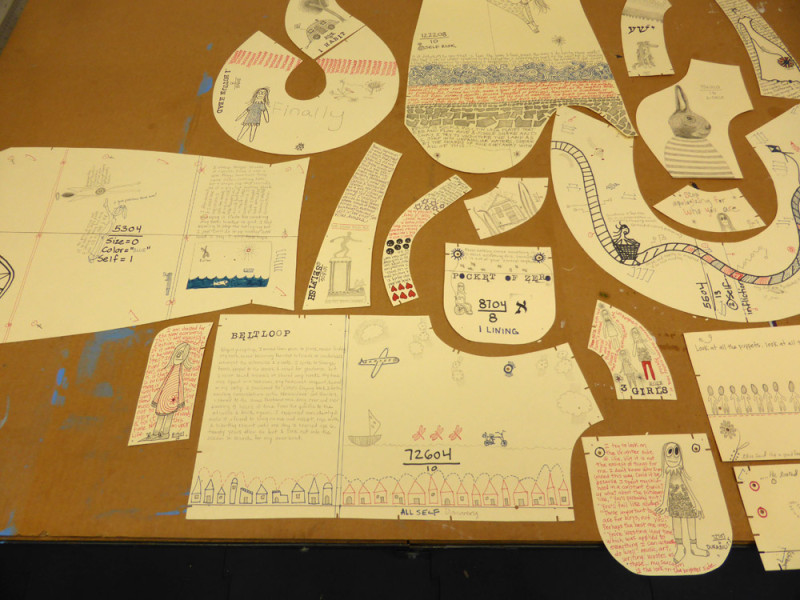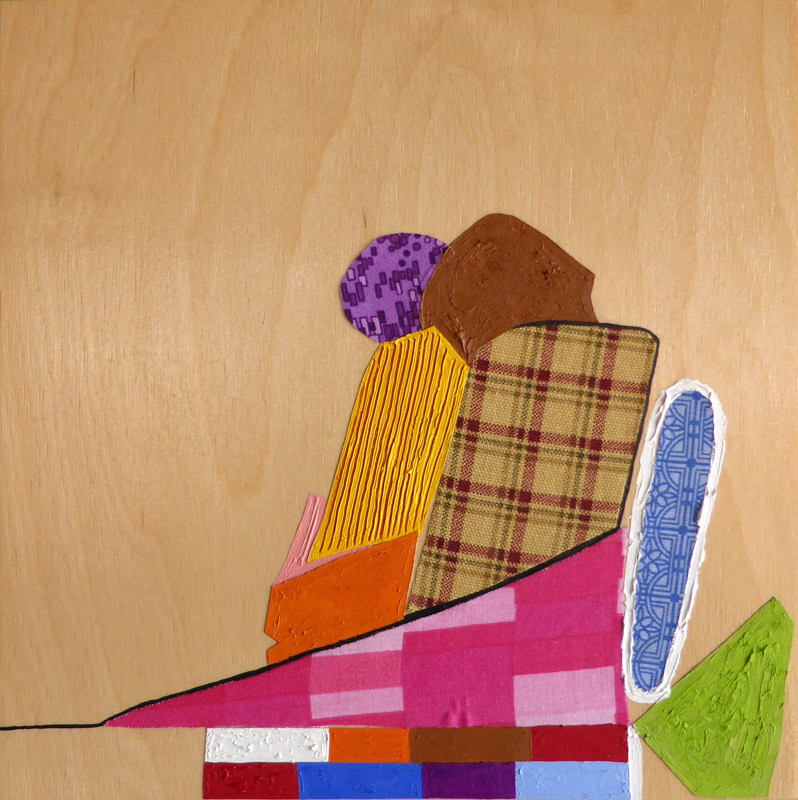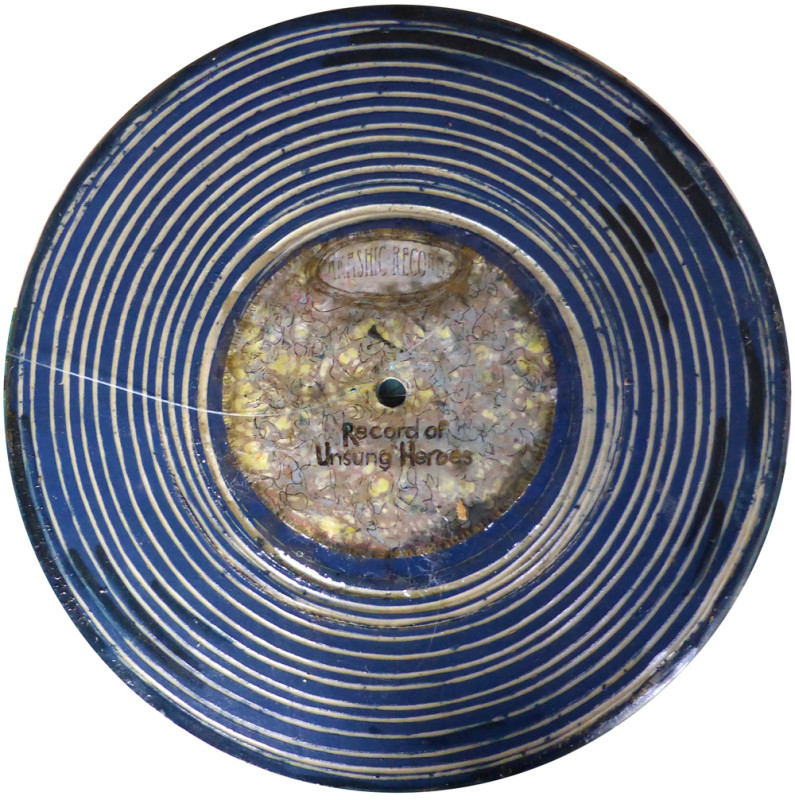There’s a term in the garment industry, in pattern making anyway, called “plotting.” I’m about to bore you with its meaning.
Growing up, I worked in the family business of grading and marking master patterns for manufacturing. We made mostly high fashion stuff, and some sportswear for expensive designers. Grading is another word for sizing, which is actually a trade in and of itself. My father learned how to do it by going to LA Trade Tech in the early 1960s. He worked his way up from the cuttingroom, cutting fabric in one of the manufacturing factories in Downtown Los Angeles. He actually had a textile background already after WWII in Philadelphia, and later when he moved to Miami before coming to Los Angeles. Back then, he worked various jobs in the cuttingroom and one of them was plotting. And I’ll get to that. First I’m going to bore you with some other stuff.
My dad was not what you call a pattern maker. He was a grader. A pattern maker is another trade all together. Sometimes the designer works with a pattern maker and sometimes the designer knows how to make their own patterns. The master patterns are created by the grader from a dummy pattern made by the pattern maker. They make them from the size of the model they fitted. Back when I was working, the model was about a size 8. Six or 8, never smaller – if you can believe that! But the reason for this is because you want to grade the sizes both up and down from the best fit in a mid range, and sizes would usually run from 2-14 or even 16. This is not the glamorous side of the fashion industry. These are not the same models that walked the runway and we were not involved in the designing process in any way.
I want to pause here and tell you an interesting story about a friend of mine that thought that what we did was glamorous though. Maybe I’ll wait until I’m done explaining the rest of this process though, so stay tuned…
Okay, so, the designer’s dummy pattern was usually made of a thick, blue-colored paper, but not quite as thick as the masters. Sometimes the paper was white though. The masters are made in this thick manila paper that I use in my art. It’s about #125 paper, much like the paper used to make those manila office folders.
Once an entire style (jacket, pair of pants, blouse, jumper, etc.) is graded and cut, a marker is made. A marker is essentially a giant Xerox of of all the pieces of the pattern (all the sizes included). It is printed on a very thin paper called dot paper. It’s is almost like tissue paper, but a tad thicker. This is the paper that is placed on top of a huge stack of material, then an electric cutting machine comes down on top and cuts the shapes out through the paper and all of the fabric at the same time. It’s quite dangerous stuff and you have to learn how to work this machine very carefully if you don’t want to lose a finger.
Anyway, when setting up the master patterns to take the image, you have to plot those patterns as close together as possible in order not to waste any paper space. That’s what plotting is. You plot out those master patterns on the table, and as you can imagine, it is a long table – the tables are typically 72 inches wide by 35 feet long, and there is a machine with an ultra violet light that moves over the table and slowly takes an image of all of the master patterns. Then it prints out the silhouetted outline onto the dot paper. You need a special wide, 72 inch wide printer. But nowadays, it’s all done by computers, as well as the plotting. You still have to know how to do it, you just do it on a computer in a program instead.
Why all this explanation? I don’t know. I’m just telling you this to give you some background on where my Journal Project comes from. I’ve spent the last couple of days plotting out how I’m going to hang my new installation at my show in a couple weeks and it’s not easy when you don’t have the space to lay it out in. And of course, I’m not plotting it out as if I were making a real marker because I’m not trying to save space and cram pieces together. I’m going for an aesthetic look here. The problem is that I either need a wall space or a table space to plot it out before I install it ahead of time and I don’t have the space, so I have been doing it in sections. This makes it very hard to find a center or do exact measurements. It driving me a bit crazy because I don’t trust the measurements since the space between each pattern is not exact. I kind of “eye” it.
I’m also replacing about eight of the pieces with newer drawings. I just cut them yesterday. All these pieces go back to 2004. That’s when I started the project. I used to work on it every day, but throughout the years I’ve become lazy about keeping it up and I have been keeping the journal pretty sporadically. I will do one a day for a while, then will go a couple months where I won’t do it for a while, but then there are times where I will do more than one a day. It really depends. It depends on the size too, but I’ve never taken more than one day to do a single one. They are great for “warming up.” Since I keep other types of sketchbooks/journals, I don’t always resort to this one, so it seems there is always one of them that gets deprived for a while.
I’ve finally finished up all of the paintings for the show. I finished the last piece just yesterday before I cut the blank patterns for this installation. I call it Mt. Candy. It’s 14 x 14 inches.
It’s not a good photo because of the light. Sorry.
I don’t think I showed the finished images of these two, Foothill (10×10 inches):
And Rock Line (10 x 10 inches):
That wraps up 20 pieces for the show. I hope that’s enough. Plus the drawings. There will be about 50 of those. I have four larger ones and four small ones to do yet though, but I can do those pretty easily even if I do one a day before I install the show.
Pretty much. …I am going to be taking a retreat before I install the show. Almost forgot! I would like to have everything done before I go if I can. That actually means I have a busy week ahead of me. I think I can get pretty much most of it accomplished.
We’ll see.
In other news, Saturday mjp and I went to Angels Gate Cultural Center‘s Open Studios and got a new acquisition from artist Beth Elliot. It is a ceramic piece that looks like a record, and I’m absolutely in love with it! The back of it has painted clouds, but I forgot to take a picture of that. Oops. Anyway, isn’t it cool??? I keep telling myself not to add anymore art to my collection because I have so much of it, but I couldn’t help myself.
Okay, so I promised to tell you the little story of my friend.
When I was growing up and working for my dad, we had our own freelance grading business and just about every friend my brother and I had under the sun moon and stars worked for us at some point in time. Also, one of the perks of working in this industry, as un-glamorous as I said it was, I was able to order really interesting clothing for free through my dad. I dressed pretty weird, you might say, especially during the years I was going to Jr. high (when I did attend). I was not popular though, despite the high fashion pieces I wore. I mixed them with lowbrow pieces and I was just a sort of all and out weirdo waving my own freak flag.
But one very popular girl at school always noticed my clothes, especially because I was wearing stuff that was in the seasons before they came out and she was an avid Vogue reader. Fashion was her life, and even in the 8th grade, she was determined to be a designer when she “grew up.” She just about freaked out when I was wearing those Guess jeans that had the flaps that snapped over. I wore them before they were in the stores and the other kids at school thought they were odd – not cool. She was the only kid, the only kid in that “popular” crowd that would give me the time of day.
Anyway, she would approach me all the time and asked me where I got my clothes and begged me to work with us, but she was quite young and we had to do it on the down low. She really thought it would help her career in fashion though, but I explained to her that in no way would this help her in her career. It was all but grunt work, but she wanted to learn so bad, so we hired her and she was the hardest worker we ever had, except that she worked too hard – on all the things that didn’t really matter. She spent way too much meticulous time on menial stuff and slowed us all down. She wanted everything to be so neat and tidy and thought that maybe the head designers at the factories would notice her perfect penmanship. She’d even try to sneak her sketches in on the style cards. She’d show sketches to my dad, who had absolutely no clout, but she thought he maybe did. We finally had to let her go because of things like this.
However, years later when I was much older, I was on my way to NY and I thought I’d look her up to see what ever became of her and sure enough, she was a well-to-do high fashion designer there. Her name is Jean Yu. And it was great to reconnect with her and see her so prosperous. She was such a determined person – her whole life she was this way. We had a lot in common. Especially with not having support from our families. I really admire her. She is definitely a risk taker in her art too.
Just taking a little walk down memory lane I guess. Thanks for reading.







That was a wonderful snippet of the life of a person that I have grown to admire. Thank you for taking the time to share, Carol. <3
Thank you Steve. You mean a lot to me. Thank you for commenting and for all of your support. It really means everything! 🙂